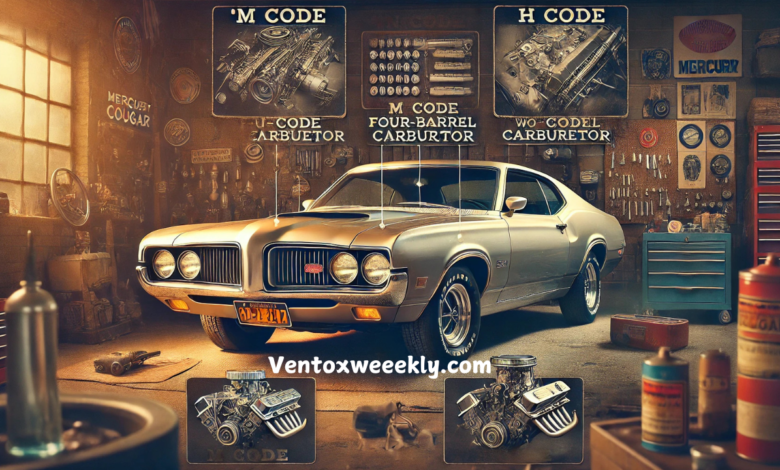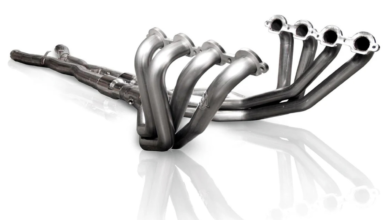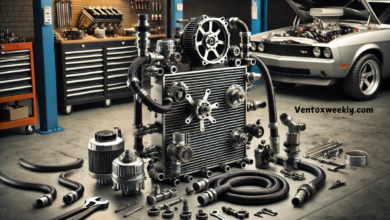Decoding the 1970 Cougar VIN M vs H

Few classic car models stir collectors’ passion like the 1970 Mercury Cougar. Known for its elegant design and potent engine options, the Cougar is a testament to the muscle car era’s glory days. Among the details that matter most to enthusiasts and collectors is the Vehicle Identification Number (VIN), particularly the distinction between VIN M and VIN H. This article explores these codes’ significance, impact on performance, and value in today’s collector market.
The Importance of the VIN in Classic Cars
A VIN is more than just a series of arbitrary characters. It’s a vehicle’s DNA, providing information about the manufacturer, model year, production plant, and engine type. For the 1970 Cougar, the VIN’s fifth character is the focal point for determining whether the original engine was the M-code or the H-code.
Understanding the M and H Codes
- VIN M – The Performance Powerhouse: The M code in a 1970 Cougar’s VIN signifies a 351 cubic inch Windsor V8 engine equipped with a four-barrel carburetor. This setup is capable of delivering approximately 290 horsepower. It was designed to offer a robust performance that appealed to those seeking a thrilling driving experience. The four-barrel carburetor allows for more significant air and fuel mixture, translating to more power and a quicker response, making it a favorite among performance enthusiasts.
- VIN H – Balancing Power with Practicality: Conversely, the H code indicates a 351 cubic inch Cleveland V8 engine with a two-barrel carburetor, which produces about 300 horsepower but is often tuned for better fuel efficiency and smoother operation at lower RPMs. This engine variant catered to drivers seeking a muscle car experience without sacrificing daily drivability. The two-barrel setup in the VIN H offers a compromise between power and fuel economy, which is ideal for regular use.
Performance and Driving Experience
Choosing between a VIN M and VIN H Cougar significantly affects the driving dynamics. The VIN M’s higher horsepower and performance-oriented setup offer more aggressive acceleration and a sportier ride. It’s well-suited for those who occasionally take their classic Cougar to a car show or enjoy an enthusiastic weekend drive.
On the other hand, the VIN H, with its slightly lower power output and emphasis on fuel efficiency, is tailored for those who prefer a mix of performance and practicality. It’s an excellent choice for regular driving, providing a comfortable ride without the high fuel consumption typically associated with high-performance engines.
Collector’s Insight: Value and Rarity
From a collector’s perspective, a Cougar’s rarity and originality significantly influence its market value. VIN M Cougars are often more sought after due to their higher performance capabilities and lower production numbers, making them rarer finds in the classic car market. Collectors prize these models for their potential to show well and perform impressively during classic car competitions.
However, VIN H models hold their charm and appeal, particularly among those who value originality and a more authentic classic car experience. These models often come with a lower price tag and can be a great entry point for new collectors entering the classic car hobby.
Restoration Considerations
Restoring a 1970 Cougar requires a keen understanding of the differences between the M and H codes. Restoration enthusiasts need to source authentic parts that match the original specifications of the engine types. The availability of parts and the desire to maintain the car’s authenticity can affect a restoration project’s overall cost and timeline.
Conclusion: A Legacy of Performance and Style
The 1970 Mercury Cougar symbolizes American automotive history, a perfect blend of style and muscle. Whether you own a VIN M or VIN H model, each brings its unique flavor to the road and can offer a rewarding experience both behind the wheel and as a restoration project. For collectors and enthusiasts, understanding the nuances between the M and H codes is crucial in appreciating what makes each model unique and how it fits into the broader narrative of classic American muscle cars.
FAQS on 1970 Cougar VIN M vs H
What does VIN stand for, and why is it important for classic cars like the 1970 Cougar?
VIN stands for Vehicle Identification Number. It’s crucial for classic cars because it provides specific information about the car’s manufacture, such as the model year, the plant where it was built, and, most importantly, the engine type. This helps verify the authenticity and original specifications of the vehicle.
How do the ‘M’ and ‘H’ codes differ in the 1970 Cougar VIN?
The ‘M’ code indicates that the 1970 Cougar had a 351 cubic inch Windsor V8 engine with a four-barrel carburetor tuned for higher performance. The ‘H’ code signifies a 351 cubic inch Cleveland V8 engine with a two-barrel carburetor, offering more balanced performance and fuel efficiency.
Which of the two VIN codes is more desirable to collectors?
The ‘M’ code is generally more desirable to collectors due to its higher performance capabilities and rarity. However, the ‘H’ code models also have a market, especially among those who prefer a more original driving experience and practicality for everyday use.
Can I convert a VIN H Cougar to a VIN M specifications?
It is possible to swap engines and upgrade components to convert a VIN H Cougar to resemble VIN M specifications. However, such modifications can affect the car’s originality and reduce its value as a collectible.
What should I look for when purchasing a 1970 Cougar to ensure it’s a genuine VIN M or H?
Always check the fifth character of the VIN, which indicates the engine type. Additionally, verify that the engine and other vital components match the specifications corresponding to the VIN code. It’s also wise to have a trusted mechanic or a classic car expert inspect the vehicle before purchasing.




